Barrenwort Epimedium franchetii 'Brimstone Butterfly'

ABOUT
Epimedium franchetii 'Brimstone Butterfly', commonly known as horny goat weed, is a distinctive perennial known for its attractive foliage and flowers. This plant features heart-shaped leaves that often have a spiny-toothed edge, giving them a delicate lace-like appearance. The leaves emerge with a bronzy-red tint in the spring, transitioning to green as they mature, and may turn red in the fall, providing seasonal interest. The flowers of horny goat weed stand out with their unique shape and colors. They are typically carried on long, wiry stems that rise above the foliage in loose clusters. Each flower possesses an intricate structure, with outer sepals that are usually a pale, creamy color. The inner petals are longer and spurred, being a vibrant yellow with a hint of red, reminiscent of little butterflies fluttering above the leaves, which likely influenced the 'Brimstone Butterfly' cultivar name. The blooming period is generally in the spring, and the delicate blossoms can add a touch of whimsy to a shade garden or woodland setting.
About this plant
 Names
NamesFamily
Berberidaceae
Synonyms
Fairy Wings, Barrenwort, Bishop's Hat, Horny Goat Weed
Common names
Epimedium franchetii 'Brimstone Butterfly'.
 Toxicity
ToxicityTo humans
The plant commonly known as Bishop's Hat is not widely recognized for its toxicity in humans. There is limited information available on the poisonous properties of this specific variety, Epimedium franchetii 'Brimstone Butterfly', and it is generally not considered hazardous. However, as with many plants, it is advisable to exercise caution and prevent ingestion, as individual allergic reactions or sensitivities to the plant cannot be completely ruled out. If any symptoms are observed after ingestion, such as gastrointestinal disturbances or allergic reactions, medical advice should be sought.
To pets
For pets, Bishop's Hat is also not known to be highly toxic. There is no significant evidence to suggest that Epimedium franchetii 'Brimstone Butterfly' carries severe risks for pets. Yet, it is always best to prevent pets from ingesting plants, as they can cause mild gastrointestinal upset or an allergic reaction in some animals. In the case that a pet does consume any part of the plant and exhibits symptoms such as vomiting, diarrhea, or unusual behavior, it is important to consult with a veterinarian.
 Characteristics
CharacteristicsLife cycle
Perennials
Foliage type
Semi-deciduous
Color of leaves
Varies
Flower color
Yellow
Height
1-1.5 feet (30-45 cm)
Spread
1-2 feet (30-60 cm)
Plant type
Herb
Hardiness zones
5
Native area
China
Benefits
 General Benefits
General Benefits- Attracts Pollinators: The plant produces flowers that attract bees and butterflies, supporting local ecosystems.
- Low Maintenance: Epimedium franchetii 'Brimstone Butterfly' is known for its hardiness and requires minimal care once established.
- Drought-Tolerant: Once established, it can tolerate periods of low water, making it suitable for xeriscaping or drought-prone areas.
- Ground Cover: Its dense growth habit makes it an effective ground cover, reducing weed growth and soil erosion.
- Shade-Tolerant: It thrives in partial shade, making it an ideal plant for woodland gardens or shaded areas of the landscape.
- Ornamental Foliage: The plant features attractive, heart-shaped leaves that can add textural interest to garden compositions.
- Seasonal Interest: It offers spring blooms and the leaves can turn into attractive hues in the fall.
- Deer Resistant: It is not a preferred plant for deer, which reduces the likelihood of damage in areas with deer populations.
- Non-Invasive: The plant is well-behaved in the garden and does not have invasive tendencies.
 Medical Properties
Medical Properties- Epimedium is traditionally used in Chinese medicine to support joint health and mitigate osteoporosis by potentially inhibiting bone density loss.
- It is thought to have aphrodisiac properties and is used to bolster sexual function and desire.
- The plant is used to address fatigue and may aid in improving physical endurance.
- Epimedium contains icariin which is considered to have neuroprotective effects and might be useful in cognitive health.
- It may have anti-inflammatory properties, making it useful for reducing inflammation in the body.
- The herb is sometimes utilized for its potential to modulate immune system function.
 Air-purifying Qualities
Air-purifying QualitiesThis plant is not specifically known for air purifying qualities.
 Other Uses
Other Uses- Ground Cover: Epimedium franchetii, commonly known as Barrenwort, can be used as an effective ground cover in shaded garden areas, suppressing weeds while adding aesthetic interest.
- Butterfly Attraction: This plant can attract butterflies and other pollinators, enhancing biodiversity in a garden setting.
- Dried Arrangements: The leaves of Barrenwort can be used in dried floral arrangements, as they retain color and structure when dried.
- Erosion Control: The dense growth habit of this plant makes it useful for stabilizing soil and preventing erosion on slopes and in problem areas.
- Livestock Feed: In some parts of the world, the plant is used as a forage plant for certain types of livestock, although this is not common practice.
- Garden Theming: Due to its unique foliage and flowers, it can be used in fairy or woodland-themed gardens as part of a fantasy atmosphere.
- Photography Subject: With its interesting structure and color, Barrenwort can serve as an excellent subject for macro and garden photography enthusiasts.
- Leaf Mold: The fallen leaves of Barrenwort can contribute to the creation of leaf mold, a type of compost that is highly beneficial for soil health.
- Winter Interest: Some cultivars of Barrenwort have evergreen leaves, offering greenery and interest in a winter garden landscape when most other plants are dormant.
- Edging Plants: Due to their low height and spreading habit, Barrenwort can be used to edge garden paths or borders, creating a defined boundary.
Interesting Facts
 Feng Shui
Feng ShuiThe plant Epimedium is not used in Feng Shui practice.
 Zodiac Sign Compitability
Zodiac Sign CompitabilityThe plant Epimedium is not used in astrology practice.
 Plant Symbolism
Plant Symbolism- Love and Affection: Sometimes referred to as "Bishop's hat" or "fairy wings," Epimedium is often associated with love due to its aphrodisiac properties. It symbolizes a deep connection and affection between individuals.
- Vitality and Longevity: The hardy nature of this plant, able to thrive in shade and dry conditions, makes it emblematic of life's resilience and enduring vitality.
- Youthful Exuberance: With its sprightly common name "fairy wings," Epimedium franchetii 'Brimstone Butterfly' can be associated with the youthful joy and playful spirit of fairies, adding a whimsical element to its symbolism.
- Protective Charm: In some cultural beliefs, the plant is thought to ward off evil spirits or negative energies, providing a form of spiritual protection.
- Adaptability: Given its ability to adapt to various conditions, it can also symbolize versatility and the capacity to flourish under diverse circumstances.
 Water
WaterBarrenwort should be watered regularly, especially during its first growing season to establish a deep, extensive root system. Once established, they are relatively drought tolerant. During dry spells, provide them with a deep soak every week, using approximately 1 gallon of water per plant each time to ensure moisture penetrates deeply into the soil. It's essential to avoid overwatering, as they do not like to sit in waterlogged soil. Water the plants at the soil level to minimize wetting the foliage, which can lead to disease issues.
 Light
LightBarrenwort thrives in partial to full shade, making it ideal for woodland gardens or shaded areas beneath trees. The best spot for Epimedium franchetii 'Brimstone Butterfly' would be a location that receives filtered light or morning sun and afternoon shade, which mimics its natural habitat's light conditions. Prolonged exposure to intense sunlight might scorch its delicate leaves.
 Temperature
TemperatureBarrenwort prefers a temperate climate with temperatures ranging broadly from 5°F in winter to 85°F in summer. However, it's most comfortable and grows vigorously within the range of 50°F to 75°F. While it can survive occasional dips below this range, prolonged exposure to extreme cold or heat can be detrimental to the plant's health.
 Pruning
PruningPruning Barrenwort is mainly done to remove old, damaged, or dead leaves and to promote new growth. Prune the foliage in late winter or early spring before new growth starts, to allow for the fresh leaves and flowers to emerge unimpeded. It is typically sufficient to prune it once a year at this time.
 Cleaning
CleaningAs needed
 Soil
SoilBarrenwort thrives in a soil mix rich in organic matter, with good drainage. A mix of equal parts garden soil, peat or compost, and perlite or coarse sand is ideal. The optimal soil pH for Barrenwort is mildly acidic to neutral, ranging from 6.0 to 7.0.
 Repotting
RepottingBarrenwort does not require frequent repotting and can be done every 3-4 years. It's best to repot in the spring when the plant is emerging from dormancy.
 Humidity & Misting
Humidity & MistingBarrenwort prefers moderate humidity levels but is quite adaptable and can tolerate a range of conditions. However, it does not thrive in extremely dry environments.
 Suitable locations
Suitable locationsIndoor
Place in bright, indirect light with moist, well-drained soil.
Outdoor
Partial shade, sheltered from wind, in humus-rich soil.
Hardiness zone
5-9 USDA
 Life cycle
Life cycleEpimedium franchetii 'Brimstone Butterfly', also known as Barrenwort, begins its life cycle when seeds are dispersed into moist, well-drained soil, usually in partial to full shade. Germination occurs with the right temperature and humidity conditions, leading to the emergence of seedlings. These young plants then grow into clumps with heart-shaped leaves, developing a strong rhizomatous root system underground. As the plant matures, it enters its reproductive phase, typically in early to late spring, producing graceful, wiry stems with small, nodding, yellow flowers resembling butterflies. After pollination, often by bees or other insects, the flowers develop into dry, dehiscent capsules, which release seeds to start the next generation. Barrenwort is a perennial, so once established, it continues to grow and spread each year, going dormant in winter and re-emerging in spring.
 Propogation
PropogationPropogation time
Spring to Summer
Propogation: The Epimedium franchetii 'Brimstone Butterfly', commonly known as Barrenwort, is best propagated in late winter to early spring before new growth starts. Division is the most popular method of propagation for Barrenwort. To perform division, carefully dig up an established clump, ensuring a good portion of the root system is intact with each division. The clumps should be divided into smaller pieces, each with several growing points. These divisions can then be replanted at the same depth they were growing at previously, placed roughly 12 to 18 inches (about 30 to 45 centimeters) apart to allow adequate room for growth. The soil should be well-draining and rich in organic matter to foster healthy root development. After planting, water the divisions thoroughly to settle the soil around the roots and eliminate any air pockets.

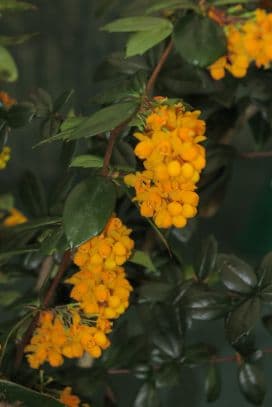
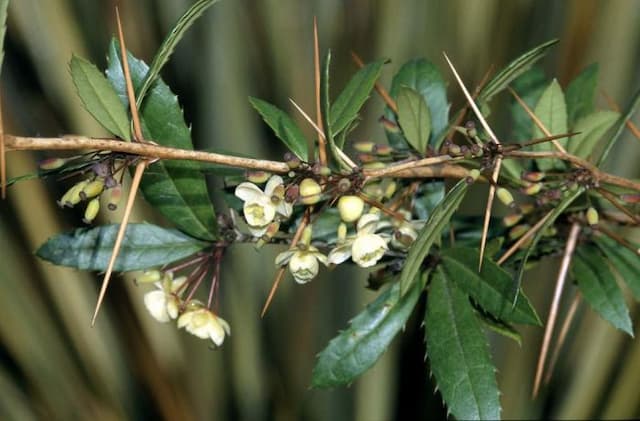
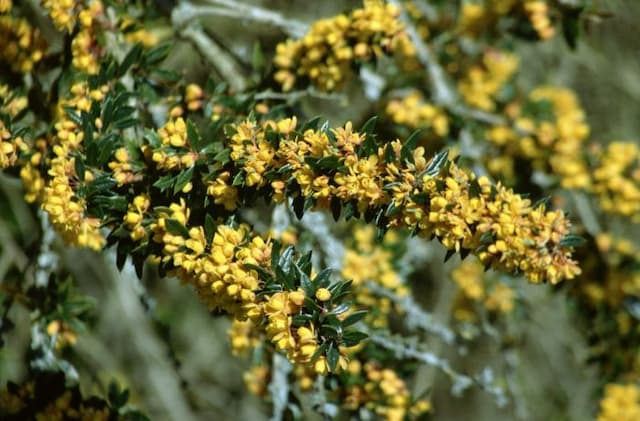

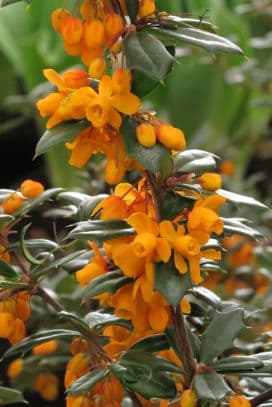
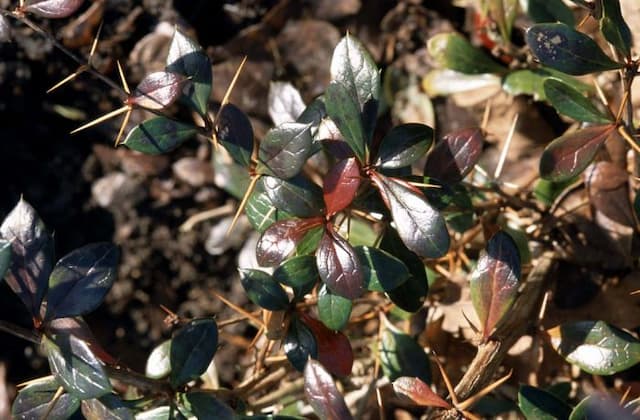


![Japanese barberry [Bonanza Gold]](/_next/image?url=https%3A%2F%2Fplants-admin.emdemapps.com%2Fimages%2Fplants%2F%2Fimages%2F604b5385e413f.png&w=640&q=75)